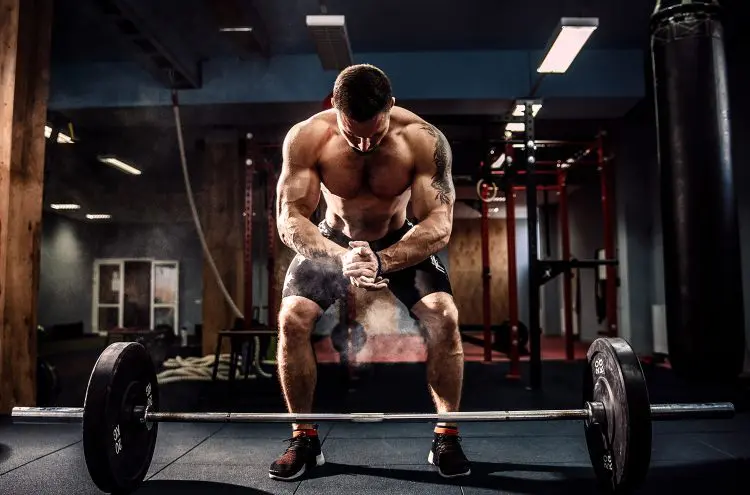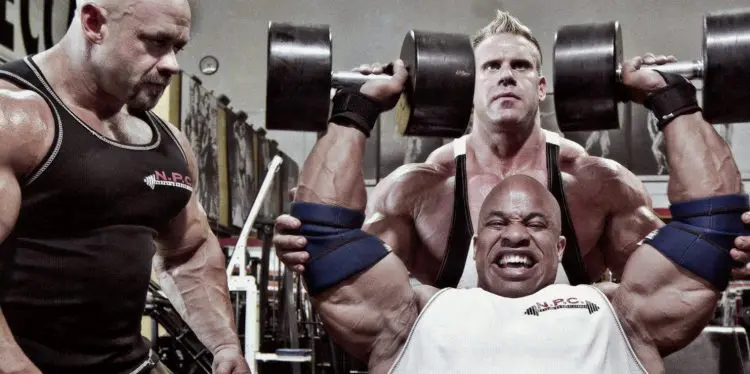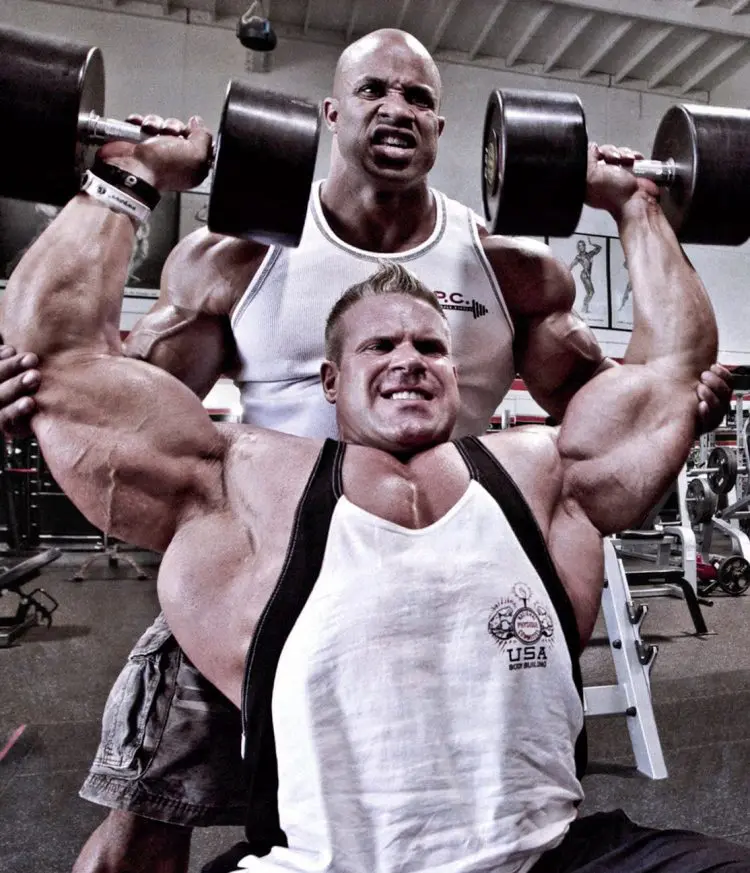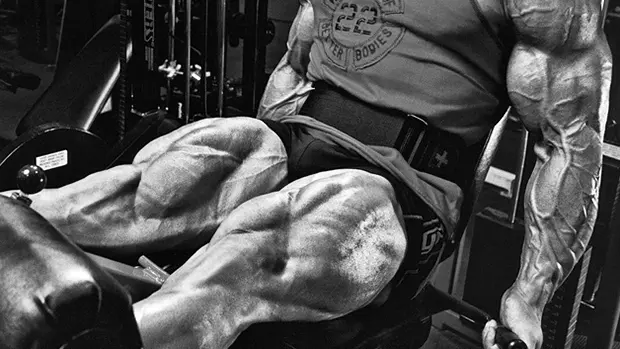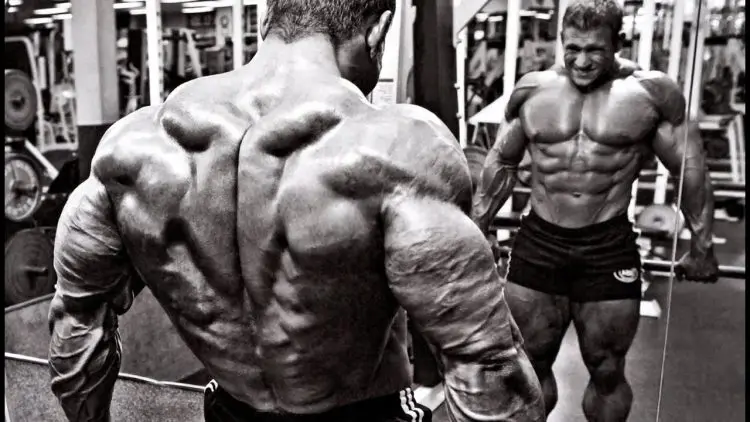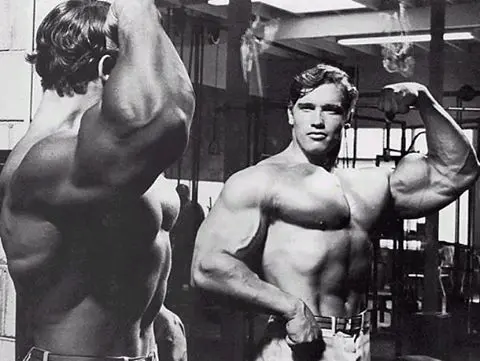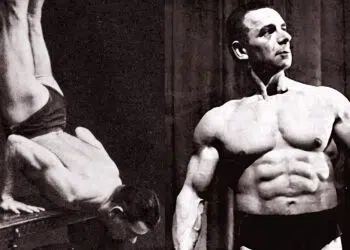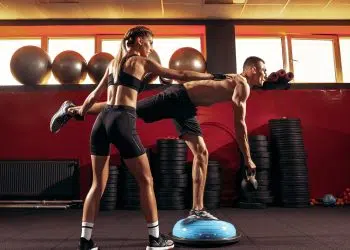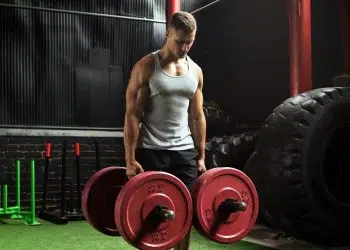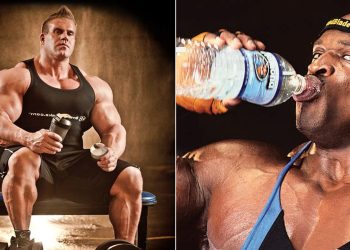We’ve got lots of excellent programs on Fitness Volt for you to follow. All you need to do is choose and print or download the one you like the look of and do it. You’ll still need to train consistently, eat right, and get plenty of rest but, in terms of planning, we’ve done all the hard work for you.
But, following one of our programs can have disadvantages too.
For a start, the author has to design the workout for a group of users, and not you individually. It may include exercises that you can’t do or don’t like, and the program can’t take into account your personal circumstances. The workout could be too hard or too easy for your current level of fitness and strength. It might not even match your personal training goals.
If you’re an experienced exerciser, you may have the knowledge to look at a workout and then adapt it to your needs. Less experienced exercisers don’t usually have this skill.

You COULD hire a personal trainer or strength coach to write you an individualized training program. A good trainer will ask you lots of questions to determine what sort of plan you want and need.
Level Up Your Fitness: Join our 💪 strong community in Fitness Volt Newsletter. Get daily inspiration, expert-backed workouts, nutrition tips, the latest in strength sports, and the support you need to reach your goals. Subscribe for free!
However, this means spending money, and there is still no guarantee that you’ll end up with a decent workout plan. Plus, you’ll need to go through the same process in a couple of months when you adapt to your workout, stop making progress, and need another plan to follow.
In this article, we’re going to provide you with the information you need to create your own personalized workouts. Just follow the steps outlined below.
Step one – choose your training goal
This is arguably the most critical step when you start to build your program. It’s what determines the type of training you are going to do. According to the principle of specificity, you are fit for the kind of workouts that you do. So, if you want to build muscle, burn fat, or get stronger, your workout needs to be aligned to those goals.
Take a moment to write down exactly what you want from your workout. Don’t try and train for multiple goals simultaneously; pursuing too many things at once makes life more complicated than it needs to be and could even undermine your training progress.
Instead, pick the goal that is most important to you. For most lifters, this means one of the following:
- Muscular endurance
- Hypertrophy (muscle size)
- Strength
- Power/speed
Bear in mind that some of these goals overlap slightly. Training for muscle size will also increase strength and endurance, while training for strength will also increase muscle size and power.
Step two – choose your rep range and rest periods
Every training goal is associated with a specific rep range. That’s why choosing your personal workout goal is so important. While you will make some progress by training outside the accepted rep range for your goal, you’ll do better if you adhere to these guidelines.
| Training goal | Rep range |
| Strength and power | 1-5 |
| Hypertrophy | 6-12 |
| Endurance | 13-20 |
There is some wiggle room when it comes to choosing your rep range. For example, if you want to build size AND strength, you could do sets of 4-8. Similarly, if you want to develop muscle size and endurance, you could focus on sets of 10-15.
Your rep range also dictates how long you should rest between sets. As a rule, the heavier the weight, and the fewer reps you do per set, the longer you need to rest. That’s because very heavy strength training taxes your central nervous system (CNS), which takes longer to recover than your muscles.
The generally accepted rest periods by training goal are:
| Training goal | Rest period |
| Strength and power | 3-5 minutes |
| Hypertrophy | 1-2 minutes |
| Endurance | 30-60 seconds |
A lot of programs also specify the weight you should lift in relation to your one-repetition maximum, or 1RM for short. While this can work, it can also cause problems when you build your program. For starters, you need to KNOW your 1RM to prescribe a percentage of that weight.
Also, you may find that some days you feel stronger than others. Training with a predetermined percentage of your 1RM does not allow for these natural fluctuations.
So, rather than get too hung up on 1RMs and percentages, just make sure you come close to muscular failure within your chosen rep range. This may take a little experimentation, but after a week or so, you should find your groove and discover the right weights to train with.
That said, the accepted 1RM percentages by training goal are:
| Training goal | %1RM |
| Strength and power | 85%> |
| Hypertrophy | 67-85% |
| Endurance | <67% |
Step three – choose your training split
Your split determines how many times a week you will work out, and what muscle groups you will train each day. There are a lot of options to choose from, including:
- Body part splits, where you train 1-2 muscle groups per workout
- The push-pull split
- The push-pull-legs split
- Upper body/lower body split
- Full body split
The right split depends on how many days per week you can dedicate to training. If you can only work out twice a week, a full body split is probably your best choice. But, if you can hit the gym four, five, or even six times a week, you could use a body part split instead.
For more information on training splits, including example workouts to try, check out our article The 12 Best Workout Splits.
Step four – choose your training volume
Training volume refers to how many sets you are going to do per workout, which can be high, moderate, or low. As a rule, the lower your rep count is, the more sets you’ll do. So, if you’re doing sets of three reps, you should expect to do more sets than if you are doing 15 reps.
The volume of your workout is also determined by how long you want your workouts to be. If you don’t have much time to train, you may purposely do fewer sets per workout. But, if you have plenty of time to train, you may wish to do more sets.
Another factor that will determine the number of sets you do is how many exercises you’re going to include per workout. You could do lots of different exercises and only a couple of sets of each, or fewer exercises and more sets.
For example, you could pick five different chest exercises and do three sets of each to total 15 sets, or you could do just three exercises for five sets to also total 15 sets.
Bodybuilders often include a greater variety of exercises per muscle group per workout to train the target body part from lots of different angles. In contrast, exercisers training for strength often do fewer exercises but more sets of each movement.
You don’t need to do the same number of sets for every exercise in your workout. You may find it better to do more sets of the first few exercises, which should be your priority anyway, and just a couple of sets of the exercises near the end of your program. This makes better use of your energy.
In the following example, you can see that you’ll be doing more sets of squats and leg presses than the other exercises, as they are arguably the “bigger bang” exercise that will produce the majority of your gains.
- Squats – 5 sets of 5 reps
- Leg press – 4 sets of 8 reps
- Leg extensions – 3 sets of 10 reps
- Leg curls – 3 sets of 10 reps
- Lunges – 2 sets of 12 reps
Whichever way you slice it, your workout volume needs to fit into the time you have available to work out. Decide on how long your workout is going to be, and then see how many sets you’ll be able to do.
For example, if you are training for hypertrophy, doing ten reps per set, and resting 60 seconds between each one, your set (including recovery) should take approximately 105 seconds.
If you plan to work out for 60 minutes, that means you have time to do about 34 sets per workout. Factor in the time that it takes to set up between exercises, and you’ll probably find you can comfortably fit 25-28 sets into an hour workout.
Level Up Your Fitness: Join our 💪 strong community in Fitness Volt Newsletter. Get daily inspiration, expert-backed workouts, nutrition tips, the latest in strength sports, and the support you need to reach your goals. Subscribe for free!
Needless to say, if you are training for strength and need to rest three minutes between sets, your set count will be considerably lower, or your workout will need to be a whole lot longer.
This doesn’t mean you HAVE to squeeze as many sets into your workout as possible, but it will be useful to know your upper limit.
Step five – exercise selection
There are hundreds if not thousands of strength training exercises for you to choose from. But, broadly speaking, every exercise can be labeled as compound or isolation.
Compound exercises involve multiple muscle groups and two or more joints working together. Examples include squats, deadlifts, bench presses, pull-ups and pulldowns, shoulder presses, and rows. Compound exercises allow you to lift heavy weights, which is useful for building muscle size, strength, and power. Compound exercises are also deemed more functional because they often involve or mirror everyday movements.
Isolation exercises involve just one joint moving at a time and fewer muscle groups. They’re useful for localized hypertrophy and endurance but not so good for building strength or power. Examples of isolation exercises include cable flyes, calf raises, triceps kickbacks, and dumbbell curls.
For almost all training goals, your workout should include more compound exercises than isolation exercises. Compound exercises provide you with more bang for your workout buck, saving you time in the process.
For example, squats train virtually every muscle in your lower body. To work the same muscles using isolation exercises, you’d need to do:
- Leg extensions
- Leg curls
- Hip extensions
- Hip abductions
- Hip adductions
- Lower back extensions
- Planks
That’s not to say isolation exercises are pointless. It’s just that compound exercises are often the better tool for the job. You can use isolation exercises to “finish off” a main muscle after you have done your chosen compound exercises or use them to preferentially target smaller muscles that may need more focus.
There is no set rule for how many compound versus isolation exercises you should do per workout. Some training experts say you can’t go far wrong if you do nothing but compounds!
There is no need to avoid isolation exercises altogether but, to make the most of your training time and energy, they should probably only make up about 20% of your total training volume.
So, choose 2-3 compound exercises per muscle group you want to train, and then 1-2 isolation exercises too. Remember, the more exercises you do, the fewer sets you’ll be able to do of each one. Conversely, if you choose fewer exercises, you’ll be able to do more sets per movement.
Step six – exercise order
You should now know what rep range you are going to use, how many sets you are going to do per workout, how long you need to rest between sets, what body parts you’re going to train when, and which exercises you want to do.
Your next task is to put those exercises into a useable order.
As a general rule, it’s best to work from high skill, heavy weight, compound exercises down to lighter, simpler, isolation exercises. This makes the best use of your energy and, as you get tired, your workout will get easier.
For example, on back day, you might put your exercises in this order:
- Deadlifts
- Pull-ups
- Seated rows
- Single-arm rows
- Straight arm pulldowns
Of course, what one person finds hard, another person may find easier, so this step is open to some individual interpretation. But, if you get to the end of your workout and cannot perform your chosen exercises properly, you may have worn yourself out because you’ve left the most challenging exercises to the end.
When determining exercise order, you should also consider the effect that one exercise will have on your performance of the next. It would be a bad idea to do back extensions before deadlifts, as this would mean deadlifting with an already fatigued lower back. Similarly, training your triceps before bench presses or overhead presses would also harm your performance.
Step seven – factor in progression
If you’ve followed the previous steps, you should now have a well-designed workout program to follow. You’ll know what muscle groups you are training on which day, what exercises you’ll be performing, and how many sets and reps you’ll be doing too.
As good as your program (hopefully!) is, it only has a limited shelf life as, after you’ve done it a few times, it will no longer be as productive as it was when you started it.
Your body adapts very quickly to any workout, and to continue making gains in muscle size, strength, power, or endurance, your workout MUST be progressive. To that end, as you are building your program, you also need to be thinking about how, over the coming weeks, you are going to make it harder.
Options include:
- Increasing the weight
- Doing more reps per set
- Doing more sets
- Taking shorter rests between sets
- Using more complex exercises
- Add a training system
You don’t need to make huge changes to your workout; small changes are usually enough to maintain your progress. However, sticking with the exact same program for too long will bring your progress to a crashing halt, so always plan for progression to avoid workout plateaus.
Here are Ten Ways to Make Any Exercise More Effective, and ensure you keep progressing from one workout to the next.
Step eight – review and revise if necessary
In some cases, what looks good on paper doesn’t work so well in real life. Don’t be surprised if your program isn’t quite perfect when you run through it for the first time. After your workout, take a moment to review what went really well and what wasn’t as effective as you hoped it would be. Make changes accordingly.
For example, your workout may have taken you 90 minutes when you had only planned to train for an hour. Or, you might find that you were just too tired to do justice to the last couple of exercises. Perhaps the exercise order wasn’t quite right.
This is all perfectly normal and part of the learning process when you start building your own programs.
Revise your workout so that, next time out, things go more smoothly. With luck, you’ll learn from these mistakes and won’t make them again.
Build Your Program – Wrapping Up
Designing your own workouts is a skill AND an art. At first, it can seem like a lengthy and even complicated process, but, like any tricky task, it gets easier the more often you do it. And, if you persevere, you’ll learn how to create training programs that are better suited to your needs and goals.
In short, if you build your workout yourself, you will be rewarded!
There is nothing wrong with following a program written by someone else, but it may not be a perfect fit if it wasn’t created specifically for you.
Work your way through the eight steps outlined above and build your program from the ground up. Then, for practice, do it again and come up with a different routine. The more times you go through this process, the better you’ll get at it.
Have fun with program design and experiment with different approaches. Save every program you write; just because you don’t want to use it right now doesn’t mean it won’t be perfect for another time.

